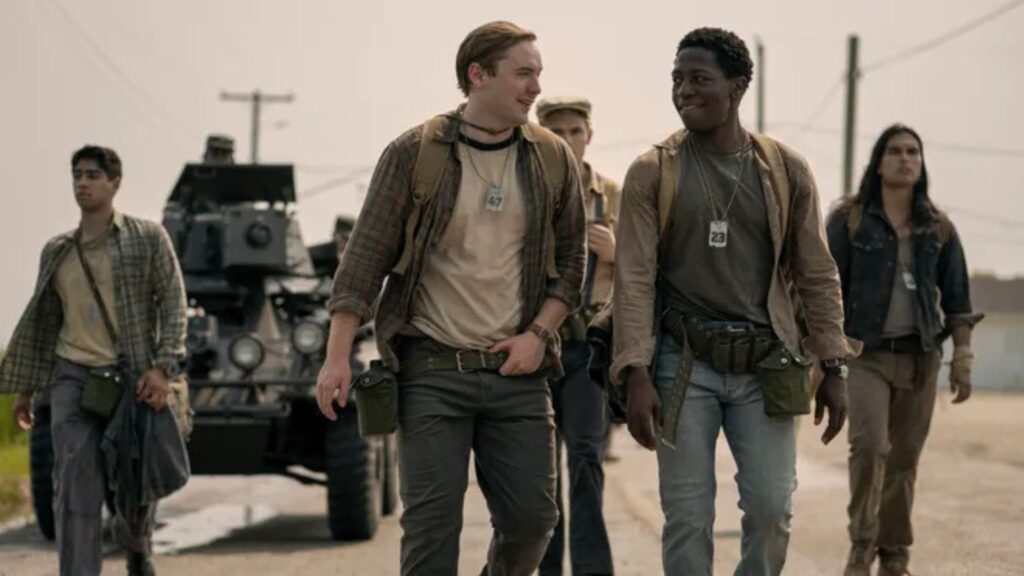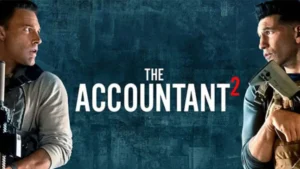Movie Blog — The Long Walk (2025): Survival, Brotherhood, and the Cost of Hope.
The Long Walk is the latest cinematic adaptation of Stephen King’s 1979 dystopian novel (written under the Richard Bachman pseudonym). Directed by Francis Lawrence and released by Lionsgate, the film reframes King’s brutal parable as a tight, character-driven survival thriller about endurance, camaraderie, and the high price of spectacle. It’s a coming-of-age story soaked in bleakness: an annual, state-sanctioned contest forces teenage boys to walk until only one remains. The film asks the old, sharp question—what will a society sacrifice in the name of entertainment and “patriotism,” and what will a child sacrifice for the hope of saving family?
Quick facts (so you don’t have to Google later).
Director: Francis Lawrence.
Screenplay: J.T. Mollner (adapted).
Runtime: ~108 minutes.
Budget: ~$20 million. Worldwide gross: ≈ $50 million.
Release (U.S.): September 12, 2025.
How many cast members — and who’s the “means character” of The Long Walk Movie?
The movie’s ensemble is built around a tight core of roughly a dozen prominent players (with many more smaller roles among the contestants). Headliners include Cooper Hoffman as Raymond “Ray” Garraty (the film’s protagonist), David Jonsson as Pete (Peter McVries), Garrett Wareing, Tut Nyuot, Charlie Plummer, Ben Wang, Roman Griffin Davis, and veteran actors Judy Greer and Mark Hamill in supporting—but narratively crucial—roles. The full credited list is longer (IMDb lists a substantial roster of the contestants and supporting townspeople), but narratively the film centers on about 10–15 principal cast members with many more background names filling out the deadly procession.
Who is the means character—the viewpoint that carries the emotional weight of the story? That’s Raymond “Ray” Garraty (Cooper Hoffman). The camera and the moral curiosity of the film travel with Ray: his anxieties, his budding friendships, his private motives (a wish to help his family), and the slow unraveling of what the Walk does to a child’s interior life. Ray is the heart of the narrative; the film’s bleakness and pathos find purchase through his eyes.
The niche of The Long Walk Movie: genre, tone, and where this sits in modern cinema.
At its core, The Long Walk is a dystopian survival thriller—a stripped-down, grim cousin to YA competition stories (think The Hunger Games by emotional tone) but far more merciless and intimate. Rather than spectacle-driven set pieces, it’s interested in tension, group dynamics, peer bonds, and psychological erosion over time. Francis Lawrence—who directed The Hunger Games sequels—brings a visual discipline here: long stretches of walking become a study of human endurance, boredom, cruelty, and solidarity. The film lands in the niche where social commentary meets coming-of-age trauma: it’s about entertainment-as-oppression and the way institutions exploit youth.
Box office — did it pay for the shoes?
For a mid-budget adaptation, The Long Walk performed respectably. With a production budget reported at around $20 million, the film has grossed roughly $50 million worldwide—enough to be considered a modest success (it more than doubled its production cost at the box office, though marketing and distribution costs reduce net profit). Domestic receipts made up the lion’s share: about $34 million in the U.S. and Canada, with the rest from international territories. The opening weekend produced roughly $11.7 million, placing the film solidly but not spectacularly in the fall release window. Those numbers reflect healthy interest for a non-franchise, R-rated dystopian drama.
Box-office context matters: September 2025 saw strong competition (animated and franchise titles), so the movie’s performance—driven largely by critical goodwill and word-of-mouth—suggests a durable niche audience for tense, adult YA adaptations.
Deep plot overview (no holds barred, with spoilers).
Set in an alternate, austere America, the annual Long Walk picks 50 teenage boys (the film trims and focuses that number for cinematic economy) to march together under armed guard. The rules are simple and terrifying: maintain a minimum speed (3 mph in many versions), don’t stop, and don’t fall behind. Each walker gets three warnings; the fourth offense is death by execution. The last surviving contestant wins a fortune and a single wish—an obscene prize in a bleak economy that turns desperation into televised sport.
Ray Garraty joins not for glory but for a promise: he wants to win enough money to help his family. From the opening steps, the film is less about gore and more about the erosion of individuality. The first act is all catalog: introductions (each boy is briefly sketched—some brave, some damaged), the mood of the crowd, the chilling bureaucratic coldness of the Major (Mark Hamill), and the slow build of camaraderie between Ray and Pete (David Jonsson), who becomes his closest ally and moral counterpoint.
The middle section is where Lawrence and his screenwriter tighten screws: boredom becomes suffering, minor infractions become moral tests, alliances form and disintegrate, and the psychological cost mounts. Men who were friends become competitors whose survival requires betrayal of basic human kindness. That’s the film’s cruelty and its moral argument: a system that punishes rest ultimately punishes empathy. There are set-piece shocks (executions in front of the group), small acts of heroism, and moments of tenderness—letters home, a shared cigarette, a whispered promise—that humanize an otherwise instrumented crowd.
The climax is mathematical and merciless: the field narrows, bodies fall, and the final walk becomes a study in obsession. Ray’s interior arc is crucial—his early hope to save family softens into a desperate will to survive and finally into a recognition of what he is becoming. The denouement—if you want the emotional truth and not spoiler mechanics—leaves you with the bitter aftertaste King always intended: victory is pyrrhic. There’s a haunting final image in which the cost of winning is painfully visible; the prize does not bring the catharsis or restoration one expects.

Themes & motifs — what the film is really about.
Spectacle as oppression: The Long Walk is entertainment and a political tool—patriotism as televised cruelty. The crowd’s appetite, the narrator’s detached voiceover, the Major’s grim enforcement—these elements reveal how populations normalize violence.
Masculinity under pressure: The boys are often pushed into archetypes—stoic, cruel, jokester, fragile—but the film interrogates those roles by showing how institutional cruelty forces destructive forms of masculinity to bloom.
Friendship and moral compromise: The bonds that form on the road are pure and brutal. Ray and Pete’s relationship is the movie’s emotional backbone; it shows how friendship can be salvific even in a system designed to crush solidarity.
Coming-of-age as loss of innocence: The Walk is an accelerated, violent rite of passage. Youth is stolen, and maturity here is corrosive rather than ennobling.
Performances, direction & craft.
Cooper Hoffman carries the film with a quietly haunted performance—his Ray is not a swaggering hero but a boy who learns to steel himself; that restraint sells King’s moral brutality. David Jonsson’s Pete is magnetic: tough, principled, and human. Mark Hamill, deployed against type, is memorably chilling as the Major—calm, institutional, and deeply authoritarian. Judy Greer provides a heartbreaking human counterweight in supporting scenes, grounding the film’s domestic stakes.
Visually, Francis Lawrence keeps things lean and stripped: long tracking shots, horizon frames, and a muted palette make the road itself feel oppressive. Sound design—feet on pavement, the clank of weapons, distant crowd noise—creates a palpable exhaustion that’s more terrifying than cheap jump scares.
Strengths & weaknesses.
Strengths: character focus over spectacle; strong lead performances; faithful thematic fidelity to King’s bleak moral; direction that makes walking feel cinematic and fraught.
Weaknesses: pacing can feel repetitive (the premise’s sameness is both intent and a structural risk), and some secondary characters are sketched rather than deeply developed—inevitable given the premise’s numbers game. For viewers seeking action or plot variety, the film’s relentless march may feel punishing.
Final verdict of The Long Walk Movie.
The Long Walk is not comfortable entertainment; it’s a moral probe masquerading as a survival movie. If you come for thrills, you’ll get a few stark shocks. If you come for character and social critique, the film delivers in spades. Francis Lawrence’s adaptation respects the cold heart of King’s story and lets actors like Cooper Hoffman and David Jonsson translate that coldness into human cost. The film asks you to watch boys turned into spectacle and to feel the shame of a society that applauds. That’s heavy, and that’s precisely why The Long Walk lingers long after the credits roll.





